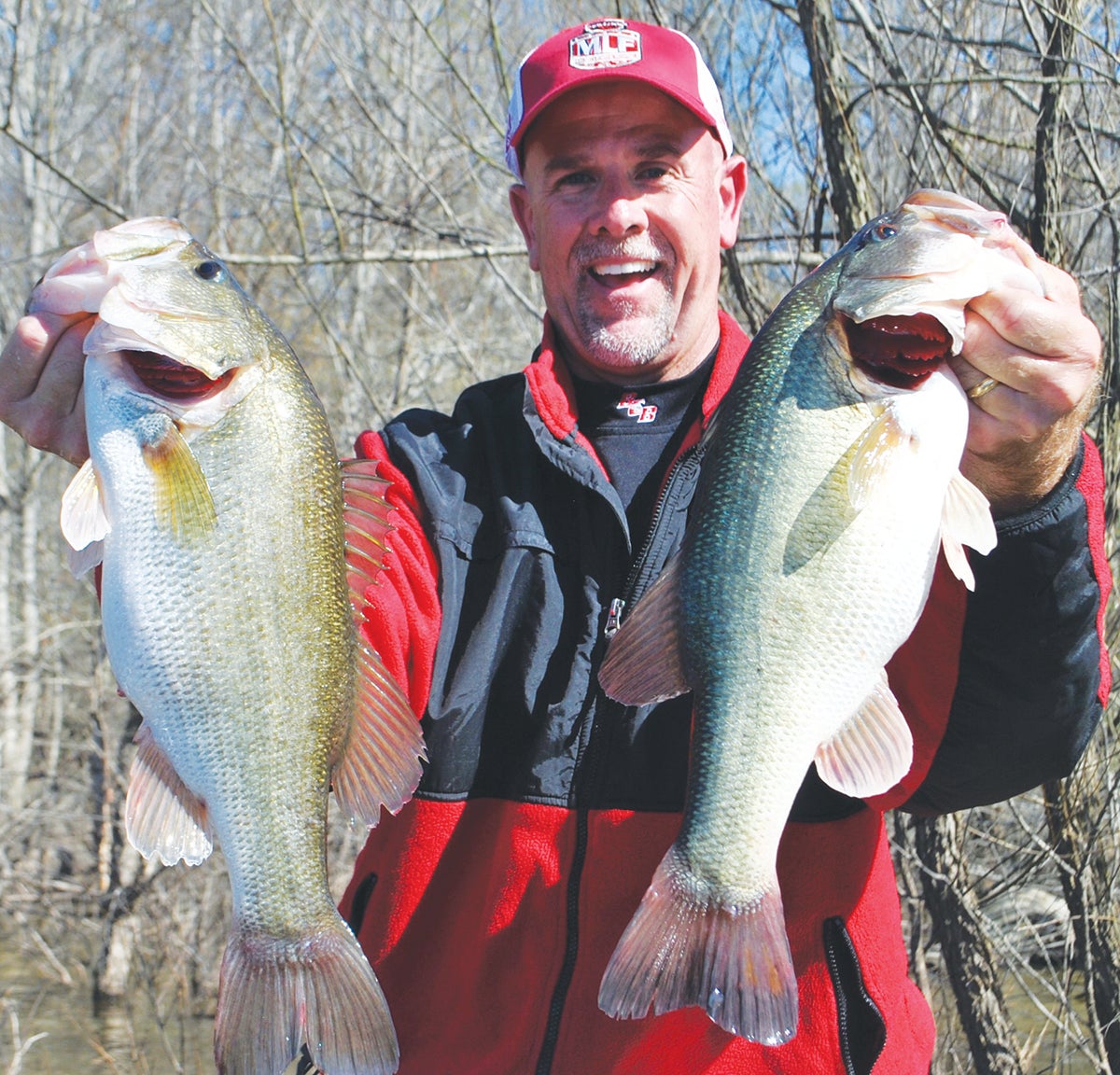Larger largemouths goal of new stocking program
Published 10:04 pm Wednesday, February 8, 2023
|
Getting your Trinity Audio player ready...
|
 Say “F1” in North Carolina, and most guys are going to think of race car drivers with names like Ayrton, Nigel and Niki, driving cars that look like long cigars with wheels, Formula One vehicles that no self-respecting Cale, Darrell or Dale is going to try to pilot around a road course at 200 mph.
Say “F1” in North Carolina, and most guys are going to think of race car drivers with names like Ayrton, Nigel and Niki, driving cars that look like long cigars with wheels, Formula One vehicles that no self-respecting Cale, Darrell or Dale is going to try to pilot around a road course at 200 mph.
But to bass fishermen in North Carolina – ones in the know, anyway – F1 means something entirely different. An F1 is a fast-growing, aggressive bass that is created in a fish hatchery somewhere by crossing a Florida-strain largemouth with a northern-strain largemouth.
This hybrid fish has the ability to grow bigger than the average bass native to North Carolina – that comes from its Florida mom or dad – but to also live and prosper in waters that get much colder than they do around DisneyWorld – that comes from its northern mom or dad.
And for a lot of fishermen in North Carolina, an F1 is coming to a lake around you, thanks to the N.C. Wildlife Resources Commission, which is getting some financial help from a non-profit formed by three fishermen who were looking for a way to boost bass fishing in North Carolina lakes and rivers.
“This is an experiment,” said Corey Oakley, a biologist who is the assistant chief of the commission’s Inland Fisheries Division. “When you cross Florida and northern bass, you get the best of both worlds: the larger size of Florida bass and the better feeding behavior of northern bass. They aren’t a miracle fish, but when you get a cross like this, you get ‘hybrid vigor’ – they grow faster and get bigger over a period of time.
“We were thinking about stocking Lake Norman (with F1s) because we have had a big problem there with Alabama spotted bass. A small group of anglers out of Norman had come and asked us to see what we could do to help, so we decided to try F1s there to see if we could enhance the largemouth bass populations.
“We were thinking about stocking other lakes, moving them to other places, and Marty and Chuck approached us about stocking F1s in Lake Gaston, which has Alabamas. We decided to make it a broader effort.
“Marty and Chuck” are Marty Stone, a former Kernersville resident now living in Bullock, a long-time bass pro and now an analyst for Major League Fishing’s television show, and Chuck Murray of Louisburg, a former NC Bass Federation president. Along with Keith Joyce of Apex, a longtime competitor in regional bass tournaments, they have Bass Anglers for NC Lakes, a registered 501c(3) organization that aims to improve bass fishing across the Tarheel State.
They also wanted to stock F1 bass in lakes across North Carolina, and upon finding out that the commission was already working on just such a plan, they wholeheartedly said they’d like to help pay for the plan.
“I had the idea two years ago,” Stone said. “I had just been feeling like the state needed a shot in the arm, and doing what I do with Major League Fishing, I’ve seen what other states have been doing and how lakes in Texas and Chickamauga (in Tennessee) have been doing – because of enhanced genetics; that’s where the science is all leading.
“The three of us went to see Corey, who I had worked with when we had the (Major League Fishing) Jordan-Falls-Harris tournament. He wanted help with messaging on the Alabama spotted bass problem – getting the message out to quit transporting fish from one lake to another. We sat around brainstorming, and it was apparent that we and the fisheries people had a goal of getting more F1s in North Carolina. They already had Norman on the docket, and we were hoping they’d work with us on Gaston.”
Out of those meetings came the idea of expanding the experiment to three lakes, so around June this year, Oakley’s fisheries staff will begin stocking F1 bass in Lake Norman on the Catawba River chain south of Statesville, Lake Gaston on the Roanoke River chain northeast of Henderson, and Jordan Lake on the Haw and New Hope rivers south of the Raleigh-Durham area.
Fingerling F1 bass cannot be raised in North Carolina hatcheries because of space restrictions, so they’ll have to be bought at 50 cents apiece from other sources. Oakley said the commission has budgeted between $150,000 and $160,000 for 2023, hoping to stock the three lakes at a rate of 4 to 6 fingerlings per acre.
That’s where Stone, Murray and Joyce come in. Their group is fund-raising through its website (www.NCF1bass.org) to raise additional funds for the stocking program – either to stock fingerlings above the number planned, or to help the state agency enhance its hatcheries so they can grow the F1s at a lower cost.
Oakley said the Norman-Gaston-Jordan triangle gives the commission the opportunity to test how F1s might succeed or fail on different kinds of reservoirs. Norman is a relatively infertile lake; Gaston has average fertility, and Jordan is among North Carolina’s most-fertile, best bass fisheries.
“Bass fishermen now have a chance to help this become a statewide initiative,” Stone said. “If you give a dollar to the program, the state gets $3 in matching funds (through the federal Sportfishing Restoration Fund). So a fisherman’s dollar can buy 8 F1 fingerlings.
“More and more people are starting to realize that the quicker and bigger we can fund this, the quicker Corey can get these F1 fingerlings into our lakes. If we see the same success in 3 to 5 years that Virginia and Tennessee have with their stocking programs, Corey and his guys can say, ‘Where else can we duplicate the program?’
“The blueprint for this works. I know what my (MLF) guys in Tennessee are saying. But time and money really make it work. The key is having proper funding and timing.”
Stone’s group has a pie-in-the-sky goal of 3,000 bass fishermen donating $100 each annually for several years. That would give Oakley’s staff another $1 million direct funds, with $3 million more in funds available from the federal government. That equates to an awful lot of F1 fingerlings headed to lakes around North Carolina.
“We have done so much more work on bass genetics in North Carolina and across the Southeast,” Oakley said. “The first fish stocked are a 50/50 cross between Floridas and northern bass. Those hybrid fish will probably have better growth rates and longer lives than our native bass, which are mutts – probably 80/20 northern/Florida genetics. That gives us the best of both worlds, but to keep those genetics in the system, we have to be continually stocking. At Jordan, we’re putting them in an environment where they should succeed.
“Will they be a magic bullet? Probably not, but we will use the money we have, and the money that Marty and his guys raise to push things forward.”





